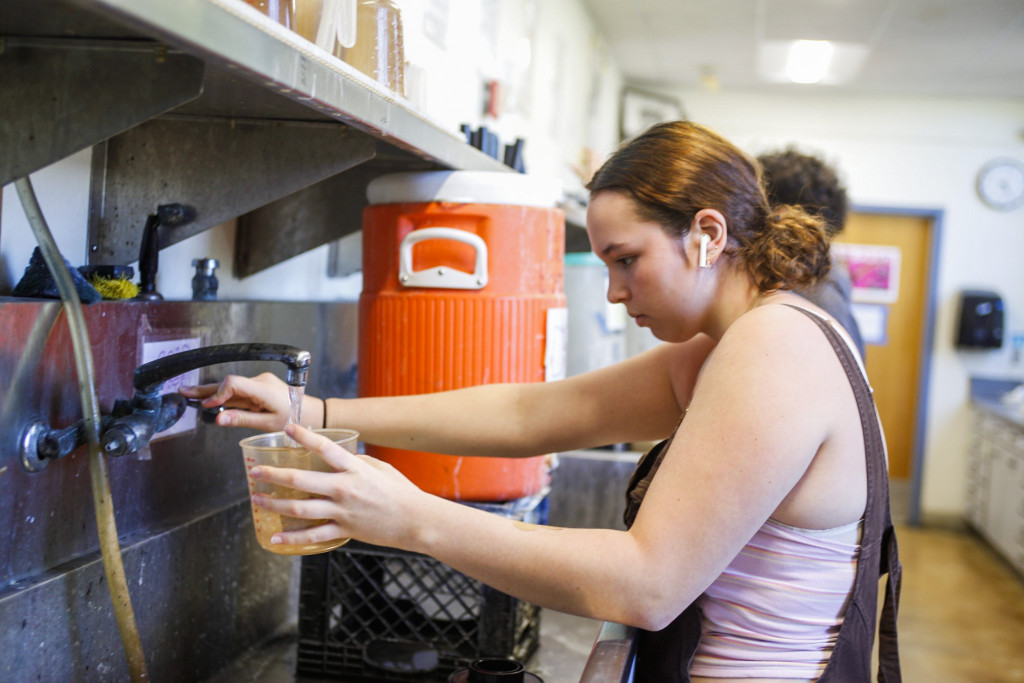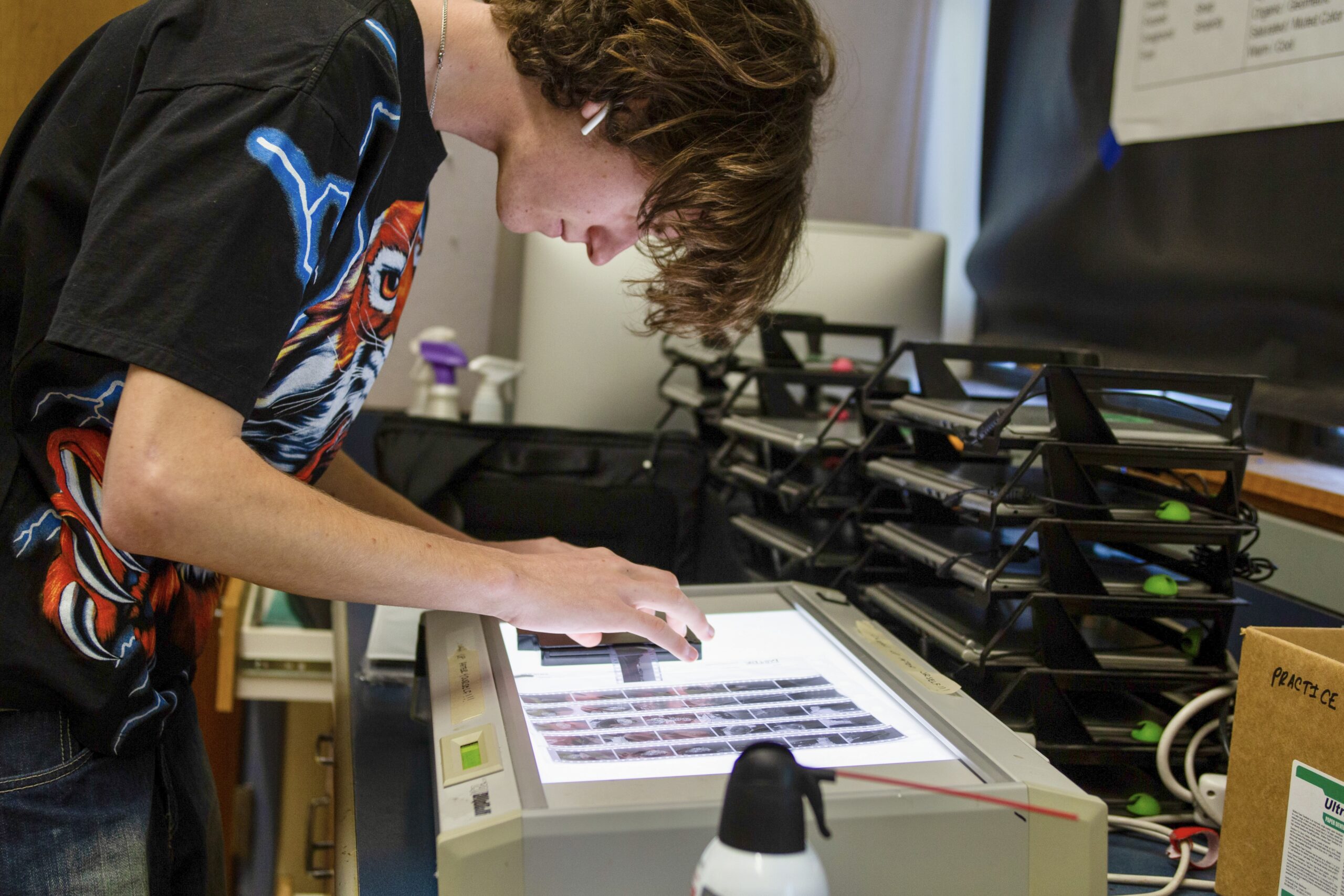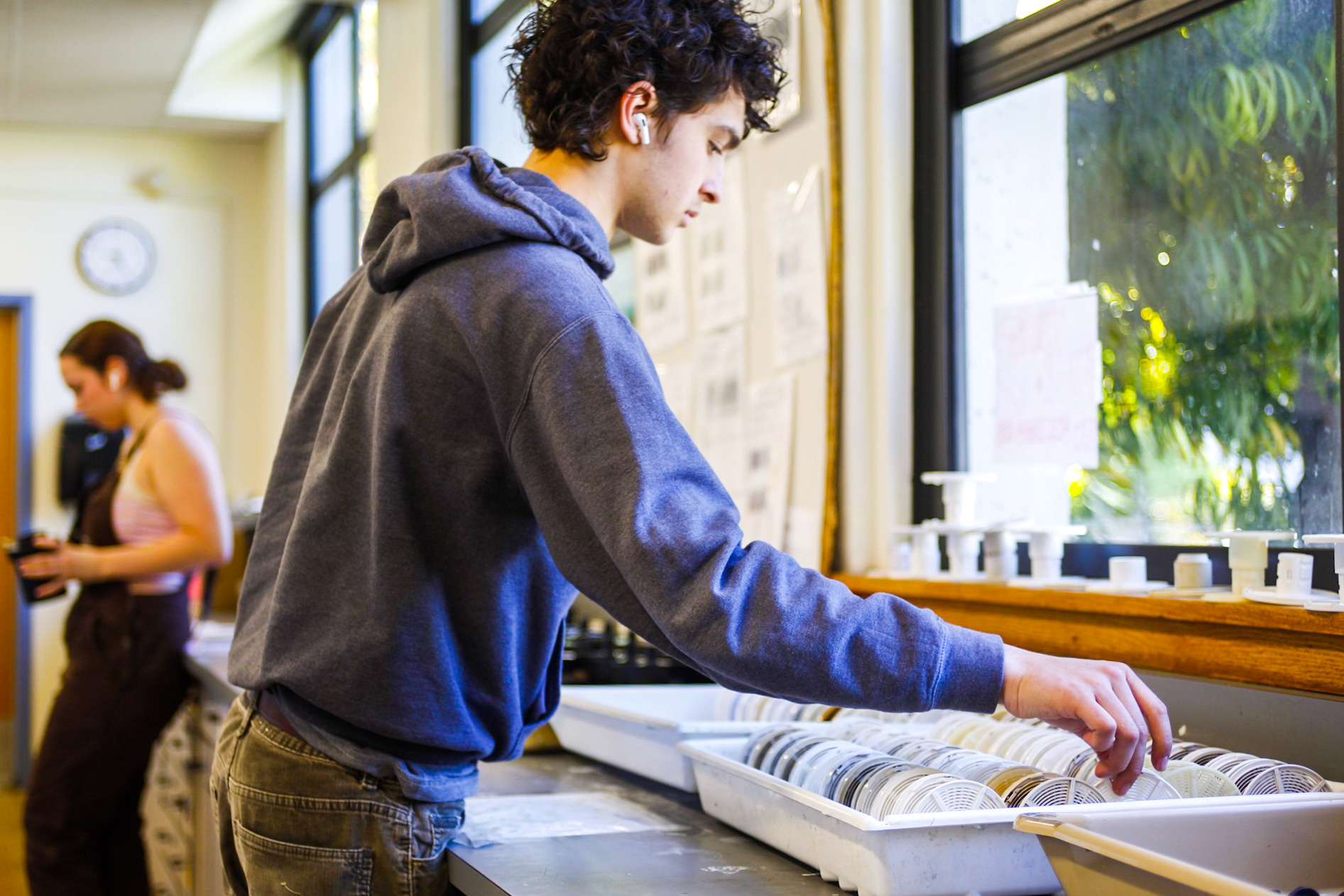“When we started out (30 years ago), we were one of a number of labs,” said Andrea McLaughlin, the owner of Photolab, a digital and film photography processing lab located in Berkeley. “Slowly they all disappeared ... I’m the last one left.”
As technology evolves and digital cameras advance at a rapid rate, many have predicted the death of film photography. Businesses that once specialized in the development and printing of analog film have closed up shop, film cameras replaced by iPhones. However, in certain areas of Berkeley, such as Photolab and photography teacher Sam Matsumoto’s classroom at Berkeley High School, film photography is alive and well.
Analog photography is different from digital photography in a few critical ways. Digital cameras use memory cards to store photos, which are accessed and manipulated on a computer. In contrast, film cameras require plastic film for each shot, which is covered in a layer of light sensitive silver halide crystals. These crystals react to light differently depending on the camera settings, light level, and film type. After a roll of film is shot, it must be chemically processed and turned into negative images that can then be scanned and manipulated digitally or taken into a darkroom to make prints.
“Your images are preserved in little silver crystals, it’s not just zeros and ones of bits and bytes,” Matsumoto explained. “It’s a physical, tangible thing and there’s something very special about knowing that (your photo) only exists in that one way. It’s precious.”

The process of developing film photography is very involved, costly in both time and money. For photographers who are shooting weddings, family shoots, or advertisements, many photos are required, which isn’t possible to do with a film camera that has only 24 to 36 shots available per roll.
“(Commercially), it makes more sense to invest in the digital system and have higher upfront costs, but at the end have a lower (cost) per shot.” said Matsumoto.

“As a result, there’s not as much demand (for film photography), so many manufacturers have stopped making certain kinds of film or it’s become more expensive,” they explained. As demand has fallen, less and less places remain that can properly process, develop, and print film photographs. Additionally with older film processing technology, when machines break it can cause major issues. “(Photolab) can’t get the parts or the people that know how to fix the machines are retiring, so partly it’s an economic issue,” McLaughlin said. “Film has been rumored to be dying out for many decades now. And I thought it would be a lot faster than it was.”
Despite analog photography’s increasing rarity, a major part of film photography’s appeal lies in the unique challenges and characteristics of the medium.
Theo Flieg has been taking Matsumoto’s film class all four years he’s been at BHS.
“The special thing about film photography for me is that I can really take my time and I have to really focus and think about every photo I’m gonna take, rather than just shooting away,” Flieg said. “There’s a lot that goes into deciding what film you’re going to shoot with, what setting, what camera you want to shoot with and deciding how you’re going to develop it and how you’re going to expose it.”
 Photo by Glenn Mah
Photo by Glenn Mah
 Photo by Glenn Mah
Photo by Glenn Mah
The many factors at play in film photography make each print highly unique.
“Sometimes it’s kind of frustrating if (your photo) doesn’t turn out exactly how you want but that’s kind of the beauty (of it), nothing’s ever going to be exactly how you imagined it,” Flieg said. “(Film photography) can take you somewhere that you didn’t expect, and become something that’s more interesting or better than what you had imagined originally.”
Even when film doesn’t come out as expected, whether it be due to a customer getting the film wet or accidentally exposing the film prematurely, people are happily surprised with the outcome.
In contrast to digital photography, where you can take thousands of photos and review them immediately, film photography creates a sense of mystery and anticipation for each shot.
“There’s something really magical about taking pictures, trying to develop a skill of getting better at it, but also just getting stuff that you don’t expect,” McLaughlin said.

Although analog photography is nowhere as prominent now as it has been in past decades, McLaughlin anticipates the unique artform to continue to be used and appreciated for many years to come.
“(With) so many unused analog cameras out there floating around in people’s garages and attics that they can get from their grandparents or wherever, as long as there’s film within them and you have fun with it, it’s going to keep going,” McLaughlin said.





